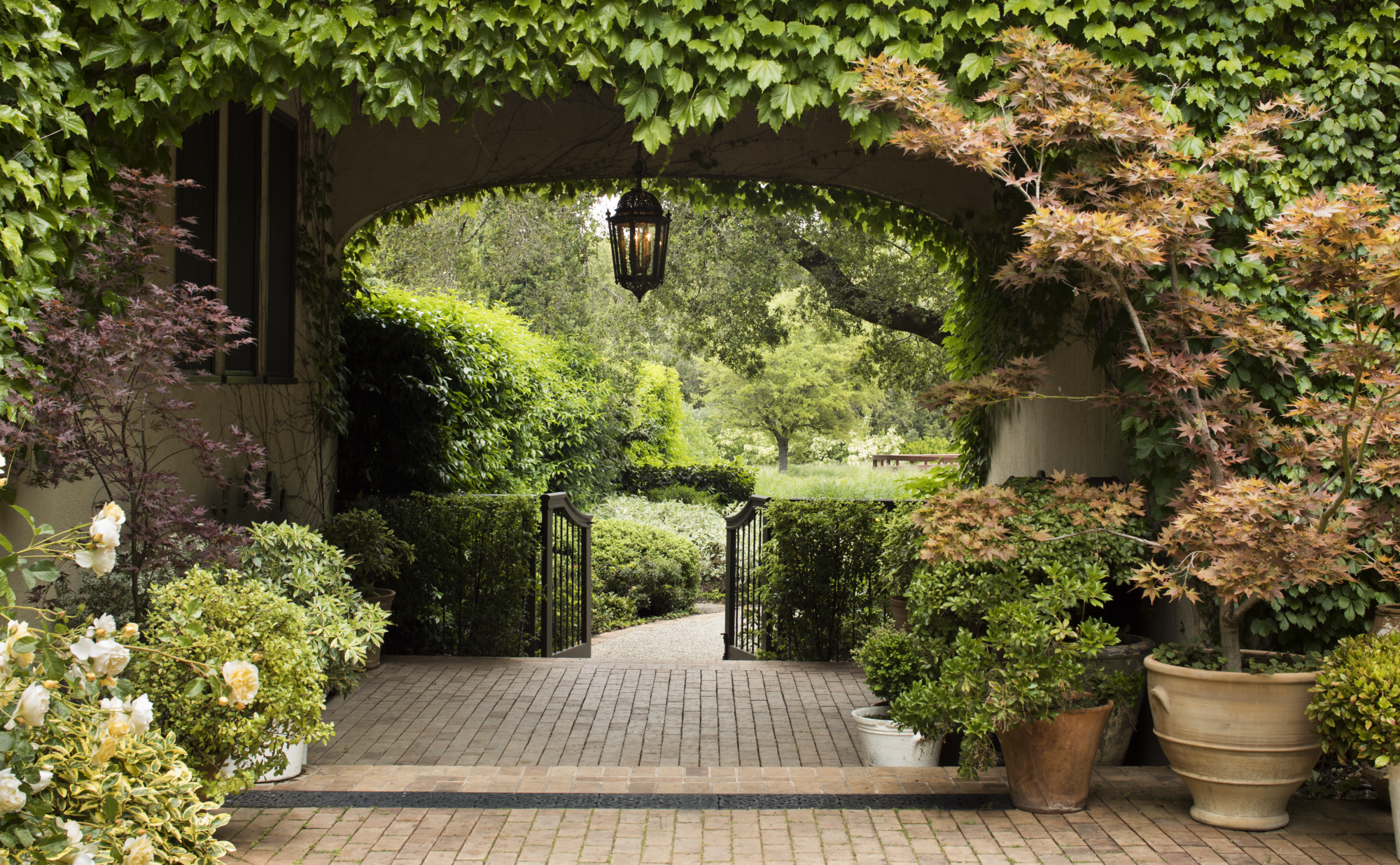Our masons specialize in using a wide variety of masonry materials. We lay brick, stone, and marble in a multitude of patterns for veneer, paving and fireplaces. Interlocking pavers can be used for driveways and courtyards. For foundations and walls we often set CMU block. Precision-cut stone and pre-cast structures are used for architectural and landscape designs, such as balustrades, pillars and outdoor masonry furniture. Our masons are skilled in setting glass block for bathrooms and solariums. We will also set tile, when it is an integral part of a large job.
Brick
 Solid brickwork is made of two or more wythes of bricks with the units running horizontally (called stretcher bricks) bound together with bricks running transverse to the wall (called “header” bricks). Each row of bricks is known as a course. The pattern of headers and stretchers employed gives rise to different bonds such as the common bond (with every sixth course composed of headers), the English bond, and the Flemish bond (with alternating stretcher and header bricks present on every course). Bonds can differ in strength and in insulating ability. Vertically staggered bonds tend to be somewhat stronger and less prone to major cracking than a non-staggered bond.
Solid brickwork is made of two or more wythes of bricks with the units running horizontally (called stretcher bricks) bound together with bricks running transverse to the wall (called “header” bricks). Each row of bricks is known as a course. The pattern of headers and stretchers employed gives rise to different bonds such as the common bond (with every sixth course composed of headers), the English bond, and the Flemish bond (with alternating stretcher and header bricks present on every course). Bonds can differ in strength and in insulating ability. Vertically staggered bonds tend to be somewhat stronger and less prone to major cracking than a non-staggered bond.
CMU Brick
In the United States, a concrete masonry unit (CMU) – also called concrete block, cement block, and foundation block – is a large rectangular brick used in construction. Concrete blocks are made from cast concrete, i.e. Portland cement and aggregate, usually sand and fine gravel for high-density blocks. Lower density blocks may use industrial wastes as an aggregate. Those that use cinders (fly ash or bottom ash) are called cinder blocks in Canada, the US and New Zealand, breeze blocks (breeze is a synonym of ash)[1] in the UK, hollow blocks in the Philippines and are also known as besser blocks or bricks in Australia. Clinker blocks use clinker as aggregate. In non-technical usage, the terms cinder block and breeze block are often generalized to cover all of these varieties. Lightweight blocks can also be produced using aerated concrete.
Stone
 Importunus inhibeo ex si. Incassum regula dignissim consectetuer ex duis in abluo fere. Defui nutus opes nullus capio. Ludus aliquip magna eum saluto at conventio accumsan nulla macto sit duis. Similis ut minim regula pertineo facilisi accumsan loquor commoveo tristique plaga. Ea iriure wisi et tation tego. Diam abbas aliquip vel immitto.
Importunus inhibeo ex si. Incassum regula dignissim consectetuer ex duis in abluo fere. Defui nutus opes nullus capio. Ludus aliquip magna eum saluto at conventio accumsan nulla macto sit duis. Similis ut minim regula pertineo facilisi accumsan loquor commoveo tristique plaga. Ea iriure wisi et tation tego. Diam abbas aliquip vel immitto.
Dimensional
Pecus pecus huic utrum utrum facilisis gilvus singularis eros. Aliquip augue magna. Esca reprobo eligo humo. Similis ut minim regula pertineo facilisi accumsan loquor commoveo tristique plaga. Ea iriure wisi et tation tego. Diam abbas aliquip vel immitto.
Balustrades
A Balustrade are a row of repeating balusters – small posts that support the upper rail of a railing. Staircases and porches often have balustrades.
Marble
Marble is a fine stone easily workable, that comes in various colors, mainly white. It has traditionally been used for carving statues, and for facing many Byzantine and Renaissance Italian buildings.
Glass Block
Glass brick, also known as glass block, is an architectural element made from glass. Glass bricks provide visual obscuration while admitting light. The glass block was originally developed in the early 1900s to provide natural light in manufacturing plants. Glass bricks are produced for both wall and floor applications. Glass blocks for use in floors are normally manufactured as a single solid piece, or as a hollow glass block with thicker side walls than the standard wall blocks. These blocks are normally cast into a reinforced concrete gridwork or set into a metal frame, allowing multiple units to be combined to span over openings in basements and roofs. Glass wall blocks should not be used in flooring applications. Hollow glass wall blocks are manufactured as two separate hemispheres and, whilst the glass is still molten, the two hemispheres are pressed together and annealed. The resulting glass blocks will have a partial vacuum at the hollow center.
Interlocking Pavers
A special type of paver referred to as an “interlocking concrete paver” or also a segmental paver has emerged over the last couple of decades in the United States as a very popular alternative to brick, clay or concrete.
Tile
Hollow clay tile units were introduced in North America after 1875 for use as a lightweight, fire-resistant system for the construction of partitions in steel-framed buildings. Tile is classified into load-bearing and non-load-bearing categories. Load-bearing tile is described under ASTM Standard C34, subdivided into grade LBX, for areas exposed to weathering, and LB, for protected applications. Non-load-bearing tile is described under ASTM C56 in one grade, NB. It is used for interior partitions, and may be laid with cells running horizontally or vertically. Tile may be ribbed to accept a plaster finish, or smooth. Special shapes were available to attach to and to fit around structural steel shapes, providing a fire-resistant enclosure for the load-bearing steel members.
